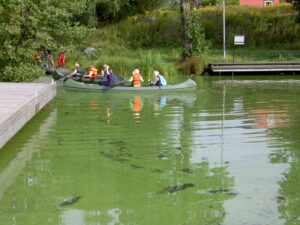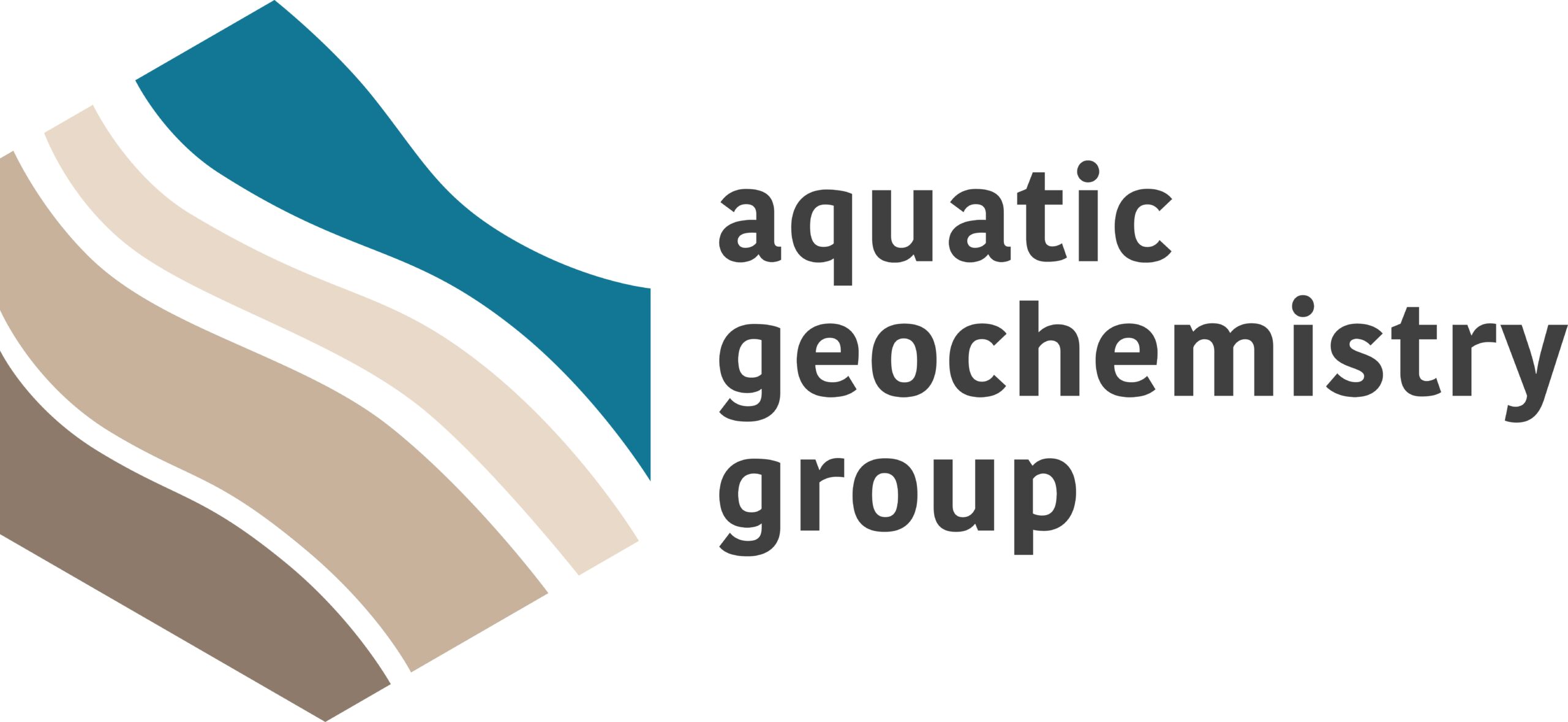
An algal bloom covers the surface of Lake Vansjø in Norway near the shore as children board canoes. Algal blooms are exacerbated by excess nutrients, such as phosphorus, flowing into lakes. Credit: Eva Skarbøvik
Our recent paper on the modelling of the role of sediment in sustaining algual blooms in boreal lakes, published this month in JGR:Biogeosciences, has been showcased in EOS Spotlight, the scientific news magazine of the American Geophysical Union (AGU).
The paper presents the coupling of two numerical models , one for lake dynamics and one for sediment geochemistry, designed to calculate the rates and fluxes controlling the mobility of elements that control water chemistry, such as carbon, iron, nitrogen, and phosphorus. In particular, the paper shows precise calculations of the effect that phosphorus bound to sediment minerals, such as iron oxides, has on water quality over time. The outcome of various climate change scenarios is tested, along with that of lake remediation measures. The tool presented promises to change how we quantify the response of legacy nutrient under climate and land-use change.
The model code is freely available on GitHub in our group's code repository (login required), while the input and output data is avalialbe on the Canadian Federated Data Repository.
